NEW YORK — Diana Ortiz remembers breaking into a huge smile the minute she saw her name on the voting roster. For many voters, the day was almost routine. But for Ortiz, who was convicted of murder when she was 18, the day carried a special significance. She was 45 years old and voting for the first time after spending more than 20 years in prison.
“I missed getting to vote for Obama,” said Ortiz, referring to Barack Obama’s 2008 election with a hint of remorse. “But I was just thrilled I was able to finally vote.”
I n New York, where 16- and 17-year-olds are automatically charged as adults, anyone convicted of a felony loses their right to vote while incarcerated. Many formerly incarcerated individuals — and even some parole officers and election officials — think that right is lost until those individuals have completed their parole. Even the New York State Voter Registration Form indicates one must not be in prison or on parole for a felony conviction in order to register.
n New York, where 16- and 17-year-olds are automatically charged as adults, anyone convicted of a felony loses their right to vote while incarcerated. Many formerly incarcerated individuals — and even some parole officers and election officials — think that right is lost until those individuals have completed their parole. Even the New York State Voter Registration Form indicates one must not be in prison or on parole for a felony conviction in order to register.
But an investigation reveals a confusing and little-known process that allows New York parolees, many of whom have their first contact with the criminal justice system in their teens, to get certificates that will restore their right to vote.
Most often used to help obtain jobs and housing, Certificates of Good Standing and Certificates of Relief from Disability are issued to formerly incarcerated individuals by the Department of Corrections and Community Supervision’s (DOCCS) Certificate Review Unit. Applicants for a certificate must complete a seven-page notarized application. For parolees who are approved, certificates demonstrate they have been rehabilitated and their crimes should no longer be held against them.
The problem is few parolees are told how to get these certificates, or even that they exist. Some parolees have to apply for them, while others have certificates issued automatically by the Department of Corrections and Community Supervision upon their release. Many who have been issued certificates at the time of release are never told how to use them and some who are granted certificates are never notified.
As far as she knows, Ortiz, who had been incarcerated for all her adult life until her release from prison in 2006, was never issued a certificate. She didn’t even try to vote until she was finished with parole.
But now Ortiz wonders if she may have been eligible to vote for Obama all along.
Community advocates and criminal justice reformers have long claimed New York’s voter disenfranchisement policy has roots in racist attempts to restrict black and Latino voting rights.
Joseph “Jazz” Hayden served nine years for a manslaughter conviction and was released on parole in 1997. He is now an advocate for ex-offenders. Voter disenfranchisement has a disproportional impact on black and Latino communities, he says. In 2000, he sued then-Gov. George Pataki and Carol Berman, then chairperson of the New York State Board of Elections.
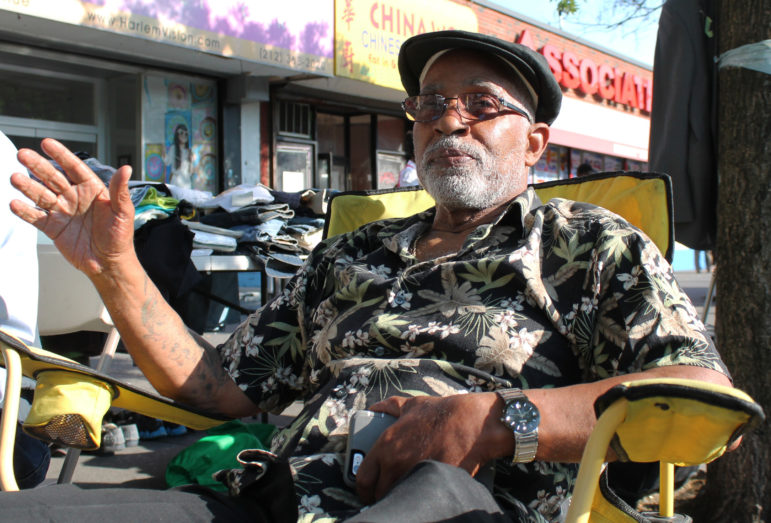
Karen Savage
“While they’re out on parole, they’re paying taxes, which flies in the face of the founding fathers’ concern about no taxation without representation,” said Joseph Hayden, an advocate for ex-offenders. “They’re taking care of families, living in communities — they should have the right to vote.”
In the suit Hayden — and other black and Latino plaintiffs who later joined him — alleged that the loss of the right to vote is a violation of the U.S. Constitution and the Voting Rights Act of 1964. They pointed to data showing blacks and Latinos are more likely to be arrested than their white counterparts and are more likely to receive harsher sentences.
In 2006, the Southern District Court in New York ruled against Hayden, saying restoring voting rights for those incarcerated or on parole was not what Congress intended when passing the Voting Rights Act.
Circuit Judge Sonya Sotomayor, a Bronx native and now U.S. Supreme Court justice, was among five who dissented, writing that the Voting Rights Act “subjects felony disenfranchisement and all other voting qualifications to its coverage.”
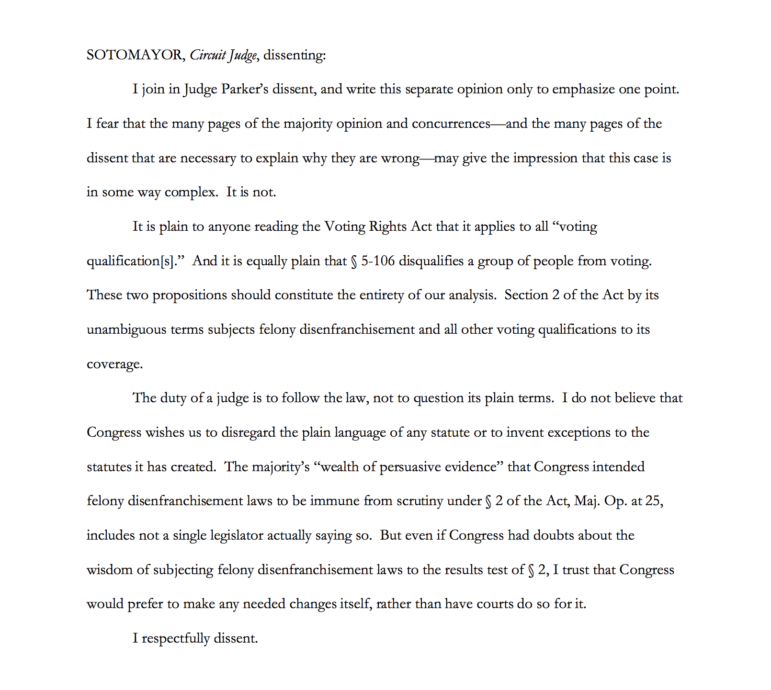
Karen Savage
Screen grab of Sotomayor's dissent.
“At the core of this is racism. It’s as simple as that. This is a way to curtail a population and curtail their participation – and it’s been effective,” Hayden said.
“We need to roll back felon disenfranchisement and eliminate it altogether,” he added. “But until we do, we need to make it possible to return the right to vote as soon as they’re released from prison.”
According to a 2016 Sentencing Project report on voter disenfranchisement, nearly 6 million individuals in the United States are unable to vote due to felony convictions.
Across the United States, disenfranchisement laws vary widely by state. Maine and Vermont allow individuals to vote while incarcerated. Ten states — Alabama, Arizona, Delaware, Florida, Iowa, Kentucky, Mississippi, Nevada, Tennessee and Wyoming — permanently revoke an individual’s right to vote after a felony conviction.
[Related: Revoked and Restored: Anthony Brown’s Life on Parole]
On June 30, the Iowa Supreme Court refused to restore voting rights for individuals with felony convictions. But earlier this year, Maryland restored voting rights for those on probation or parole andVirginia Gov. Terry McAuliffe restored voting rights for individuals convicted of felonies who have completed their sentence, including probation and parole.
New York, Colorado, Connecticut and California prohibit those with felony convictions from voting while in prison or parole. In New York, voting rights are restored for parolees who obtain certificates.
According to the DOCCS, more than 89,000 New Yorkers are disenfranchised. About 53,000 of those are incarcerated and 36,000 are on parole.
The policy of preventing prisoners and parolees from voting adversely affects African-Americans more than other New Yorkers. According to data from the New York Civil Liberties Union, one out of every 24 African-Americans in New York is unable to vote, compared to one out of every 121 voters of all races.
The certificates indicate a “presumption of rehabilitation” and eliminate licensing restrictions that otherwise prevent parolees from obtaining social worker, real estate and other professional licenses, Heather Garretson said. She is an attorney and City University of New York scholar in residence.
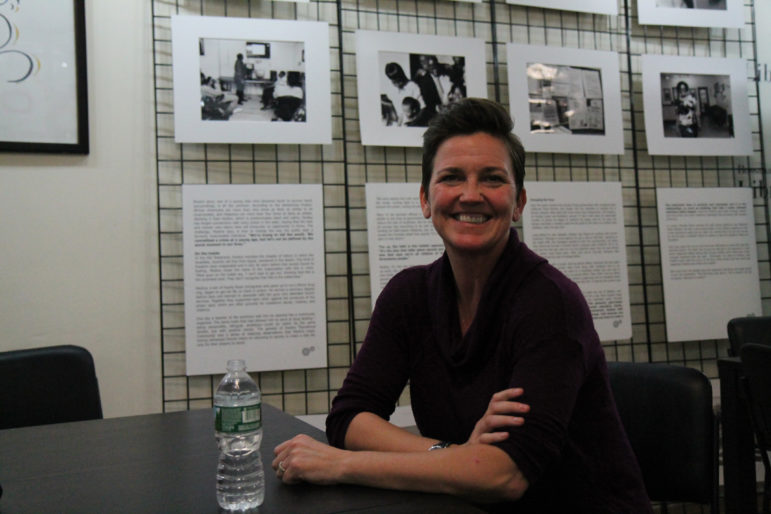
Karen Savage
Attorney and City University of New York scholar in residence Heather Garretson recently completed a study that focused on New York’s certificate programs.
Both certificates allow people to vote while on parole, something many don’t learn about until years after their parole has ended. It’s unknown how many of those now on parole are eligible to apply for each certificate.
When asked by JJIE for information related to the number of individuals eligible for certificates for the past 10 years, the Department of Corrections declined to comment.
While New York corrections policy says that those who have been convicted of only one felony should be issued a certificate of relief from disability upon release, corrections officials often don’t follow that policy, Garretson said.
“Some people come home with certificates, some don’t,” said Garretson, who recently published “Legislating Forgiveness,” a research paper on post-conviction certificate programs. There are facilities that routinely send people home with a certificate and the knowledge they need to know how to use it, but that’s the exception, not the norm, she said.
James Lloyd, 51, was released from Woodbourne Correctional Facility in September 2010 after serving five years for criminal possession of a controlled substance. Once released, he found out from Exodus Transitional Community, a Harlem organization that works with formerly incarcerated men and women, that he was eligible for a certificate of relief from disability. He was issued a certificate of relief from disability in June 2011.
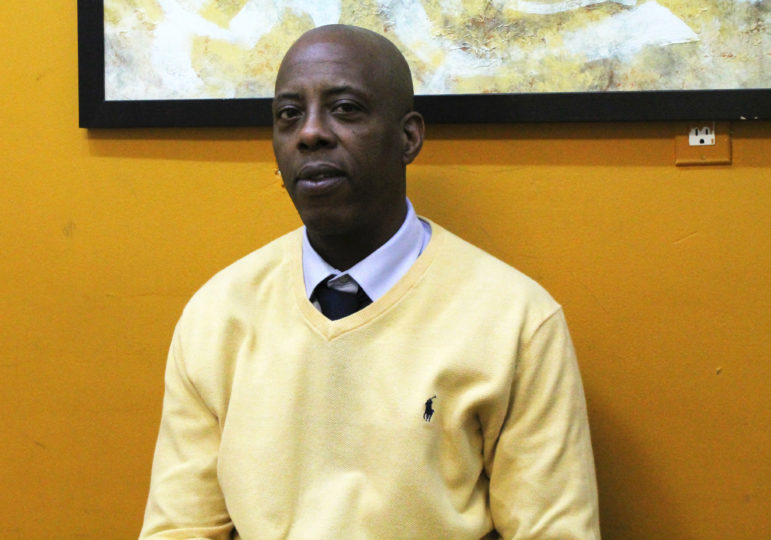
Karen Savage
James Lloyd said he didn’t know he could have voted with his certificate. “It opened up some doors as far as employment, because it’s supposed to hide the fact that I have that felony,” he said.
Like Ortiz, Lloyd later learned he could have used the certificate to vote.
“A lot of parole officers, they don’t really tell you that,” Lloyd said. “It’s like picking teeth to get them to say certain things you can use a certificate of relief for. That needs to be out there because there’s a lot of brothers and sisters that don’t know.”
Lloyd was released from parole before the 2012 presidential election and registered to vote.
He said he’ll never forget walking into PS 112 in Astoria, Queens, his wife and 18-year-old daughter, Jamese, by his side.
Lloyd said going to the polls with his daughter was one of the best days of his life, and that voting for the first black president made it that much sweeter.
“I voted for Obama,” he said proudly. “And I know there were a lot of us voting for Obama, but I feel like my one little vote helped him get there.”
Garretson wonders how many more individuals on parole could have voted in 2012 and more importantly, how many are eligible to vote in the 2016 presidential election but won’t even try because they don’t know their right to vote can be restored.
Ramon Caba, now the program manager at Exodus Transitional Community, was recently released from parole and plans to vote in the presidential elections.
“DOCCS is not doing the best job disseminating this information — even senior counselors and parole officers don’t know this is a priority,” said Caba.
Garretson feels that there’s a general apathy throughout the corrections system when it comes to sharing information with parolees that will allow them to regain their rights.
“They did pass the law in 2011 that said if you’re eligible for a certificate of relief from disability, and you make your board, you should go home with one,” she said. But, she added, safeguards need to be in place to ensure that that happens in every case at all facilities.
The New York State Board of Elections, the agency responsible for administration and enforcement, doesn’t have a record of who has been issued certificates.
“I am not aware of any database that we have access to which provides information on CRD’s [certificates of relief from disability],” said spokesman John Conklin via email.
“We receive information from Department of Corrections on convicted felons, but nothing else. The statute does not provide for any database like that, nor am I aware of any that exist,” he added.
When the New York Department of Community Corrections and Supervision was asked for the number of certificates applied for and granted between 2005 and 2016, JJIE was instructed to file a Freedom of Information Law request.
In response, Assistant Counsel David Harvey wrote, “Please be advised, the certificates are located in individual inmate and parolee files. As such, the records are not maintained in a manner that allows for practical retrieval.”
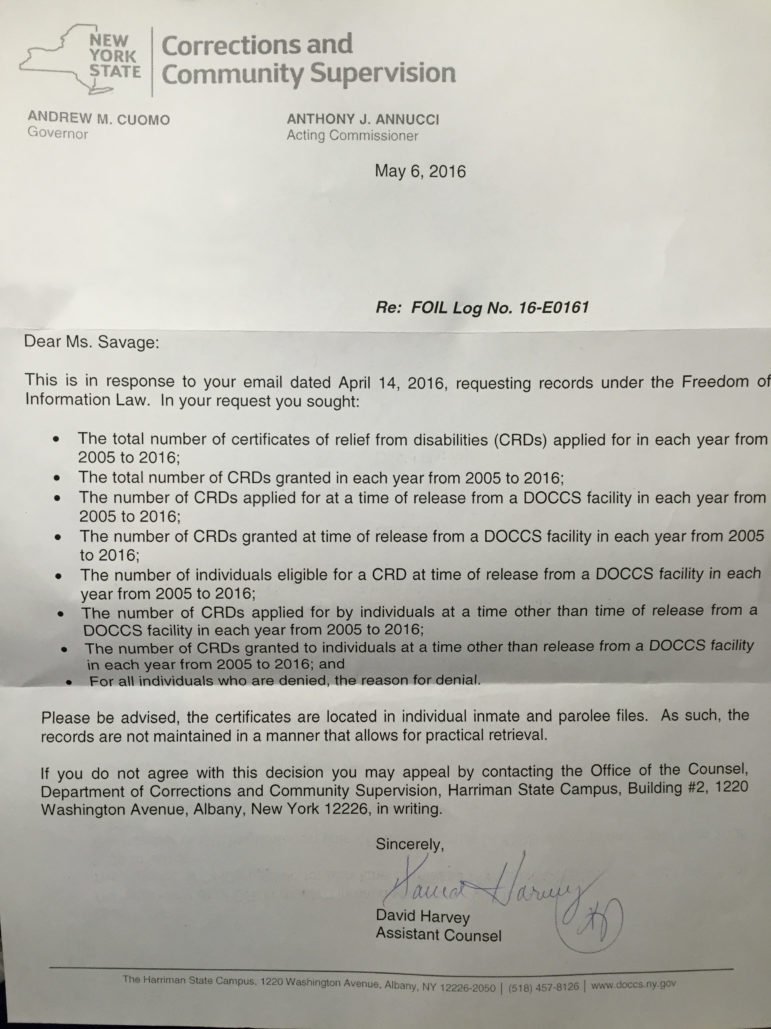
Karen Savage
Screen grab of the FOIL response.
Election law says the state election board is responsible for disseminating the names of those convicted of felonies to local election boards, who are responsible for registering voters in their area. It’s unclear how local election boards check to see who is and who isn’t eligible to vote.
JJIE asked the New York City Board of Elections to explain the process it uses to confirm voter eligibility, but it did not respond.
One parolee, who spoke to JJIE on the condition of anonymity, says election boards don’t always check. He was released in 2013 after serving 22 years for murder and is still on parole. He says he easily registered to vote when he applied for a driver’s license shortly after being released.
“Technically they tell you you can’t vote, but let me tell you, there’s nobody checking,” he said.
It’s not just state agencies who don’t know who does and who doesn’t have a certificate. In some cases, even those who have been awarded certificates don’t know.
Lisa Winters, 52, served 18 months in Edgecombe Correctional Facility for grand larceny and forgery. She said she knew nothing about certificates when she came home on November 21, 2014.

Karen Savage
Lisa Winters was ecstatic after voting in the New York presidential primary on April 19. “I thought that I wasn’t allowed to vote until I was off parole,” she said, adding that she’s always been very active in her community and regularly campaigns for local, state and national candidates.
She now works for Exodus Transitional Community, where she learned the importance of having a certificate. One day she called the Department of Corrections and Community Supervision on behalf of a client and decided to inquire about applying for a certificate herself.
“They said I had been issued a certificate of relief from disabilities on November 24, 2014. And I never knew,” said Winters, who said she always voted before her incarceration, but didn’t think she was eligible while on parole. “I said, ‘are you kidding?’ Where did you mail it to? I haven’t moved in 17 years.”
Ultimately, Garretson said, improving reentry is good for all involved. “It’s cheaper, it’s more humane and it’s more socially responsible to be like ‘when you come home, there are ways to exist and be successful.’” she said.
More related articles:
Troubled No More, Youths Bring Stories of Their Resilience to Probation Professionals
Case Now Strong for Ending Probation’s Place As Default Disposition in Juvenile Justice